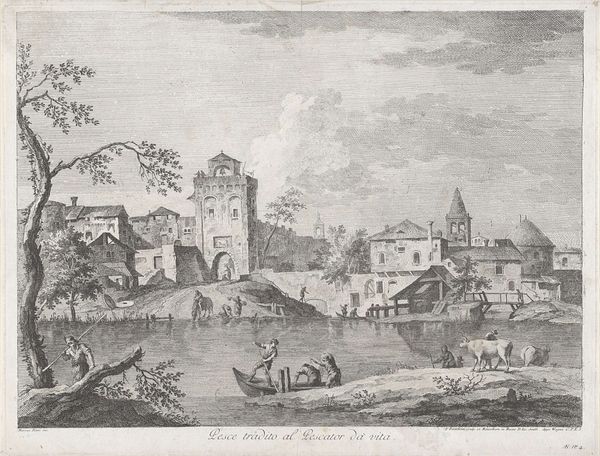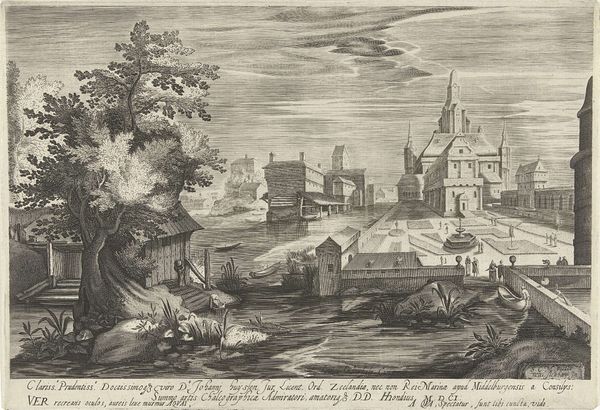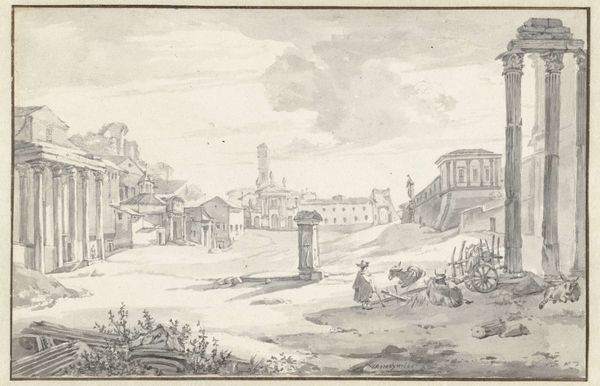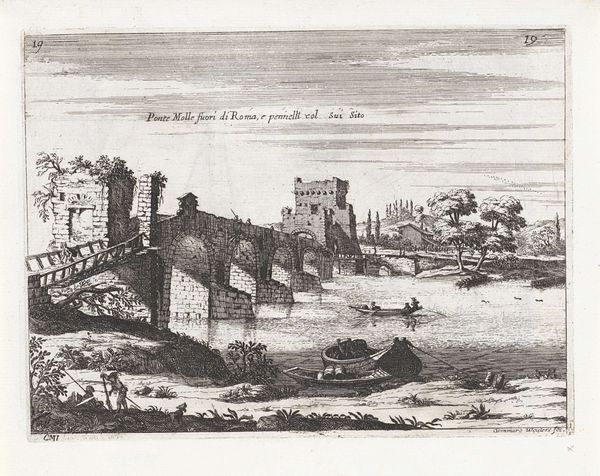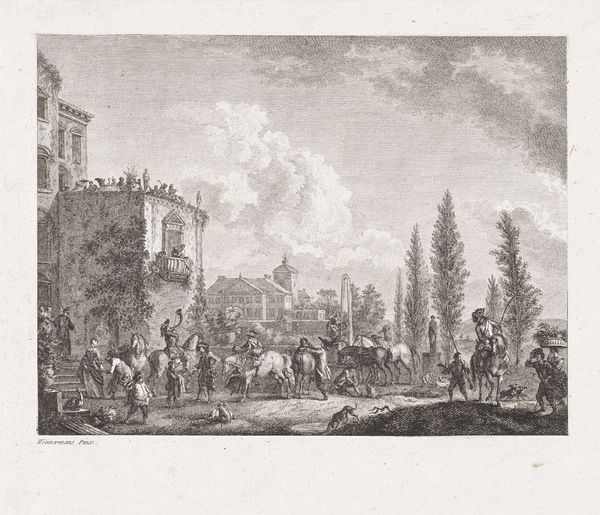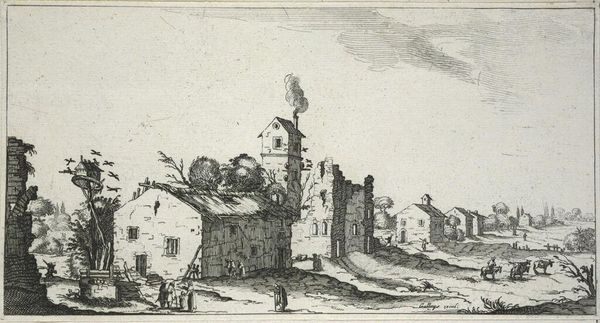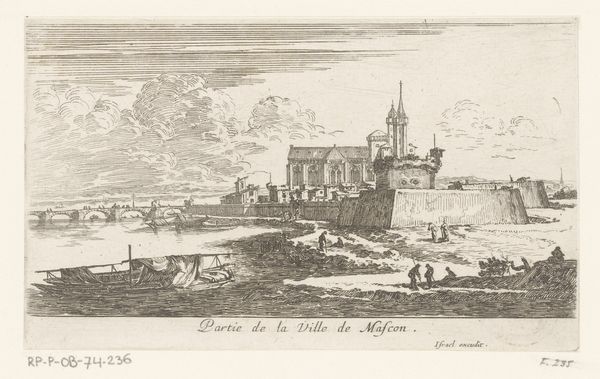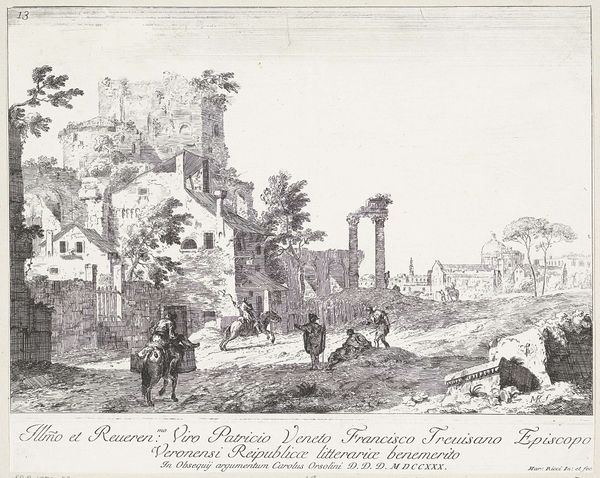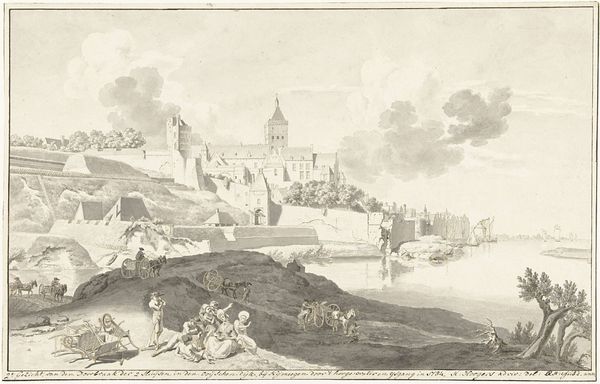
print, pen, engraving
#
pen and ink
#
baroque
# print
#
old engraving style
#
landscape
#
river
#
form
#
line
#
pen
#
cityscape
#
engraving
Dimensions: height 284 mm, width 353 mm
Copyright: Rijks Museum: Open Domain
Curator: Tell me about this print by Marco Ricci, this “Vestingstadje aan rivier,” created around 1730. Editor: Well, it’s an engraving, so the line work is really intricate, creating a detailed cityscape with a river running through it. I’m struck by how much labor went into this; each line etched carefully to build up the scene. How do you approach understanding this piece? Curator: As a materialist, I immediately look at the printmaking process. Engraving was labor-intensive and costly, making prints luxury items. What does it tell us that this scene was deemed worthy of such elaborate reproduction and dissemination? Who would have consumed such images, and what purpose did they serve? The inscription itself mentions Antonio Loredano and Carolus Orsolini. The print seems like a sort of gift, and was definitely produced to show prestige. Editor: That’s fascinating. I hadn't considered the socio-economic aspect of printmaking at the time. Does the choice of subject matter – the cityscape – play into that too? Curator: Absolutely. Cityscapes like this weren’t just picturesque scenes, but served as representations of civic pride and power. Look at the architecture. How does it communicate a certain idea of progress and urbanity? Consider the labor involved in creating and maintaining such structures as well. It reflects directly in the visual product of this very print through the skilled craftsman replicating these elements into the work, therefore becoming part of the same ecosystem and process. Editor: So, by examining the materials, techniques, and intended audience, we can understand the print not just as art but also as a commodity, reflective of its time? Curator: Precisely. This approach encourages us to think about who was involved in its production and consumption. That, in turn, affects the choices on what is depicted, where it is created, and who has access to that creation. Editor: That gives me a completely different perspective on looking at art. I appreciate your insights. Curator: My pleasure. Art exists in a broader context of social relations and material conditions that deserve to be explored.
Comments
No comments
Be the first to comment and join the conversation on the ultimate creative platform.
